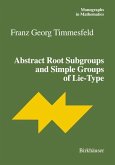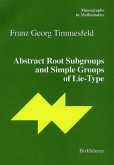This book studies maximal solvable subgroups of classical groups over finite fields. It provides the first modern account of Camille Jordan's classical results, and extends them, giving a classification of maximal irreducible solvable subgroups of general linear groups, symplectic groups, and orthogonal groups over arbitrary finite fields.
A subgroup of a group G is said to be maximal solvable if it is maximal among the solvable subgroups of G. The history of this notion goes back to Jordan's Traité (1870), in which he provided a classification of maximal solvable subgroups of symmetric groups. The main difficulty is in the primitive case, which leads to the problem of classifying maximal irreducible solvable subgroups of general linear groups over a field of prime order. One purpose of this monograph is expository: to give a proof of Jordan's classification in modern terms. More generally, the aim is to generalize these results to classical groups over arbitrary finite fields, and to provide other results of interest related to irreducible solvable matrix groups.
The text will be accessible to graduate students and researchers interested in primitive permutation groups, irreducible matrix groups, and related topics in group theory and representation theory. The detailed introduction will appeal to those interested in the historical background of Jordan's work.
A subgroup of a group G is said to be maximal solvable if it is maximal among the solvable subgroups of G. The history of this notion goes back to Jordan's Traité (1870), in which he provided a classification of maximal solvable subgroups of symmetric groups. The main difficulty is in the primitive case, which leads to the problem of classifying maximal irreducible solvable subgroups of general linear groups over a field of prime order. One purpose of this monograph is expository: to give a proof of Jordan's classification in modern terms. More generally, the aim is to generalize these results to classical groups over arbitrary finite fields, and to provide other results of interest related to irreducible solvable matrix groups.
The text will be accessible to graduate students and researchers interested in primitive permutation groups, irreducible matrix groups, and related topics in group theory and representation theory. The detailed introduction will appeal to those interested in the historical background of Jordan's work.
The book is enriched with numerous worked examples and summary tables, making the results more accessible to readers. This book is a wonderful resource for mathematicians studying finite groups or related fields like representation theory. The author combines clear explanations with rigorous proofs, making the material approachable for readers with a solid foundation in group theory." (Kivanç Ersoy, zbMATH 1553.20001, 2025)









